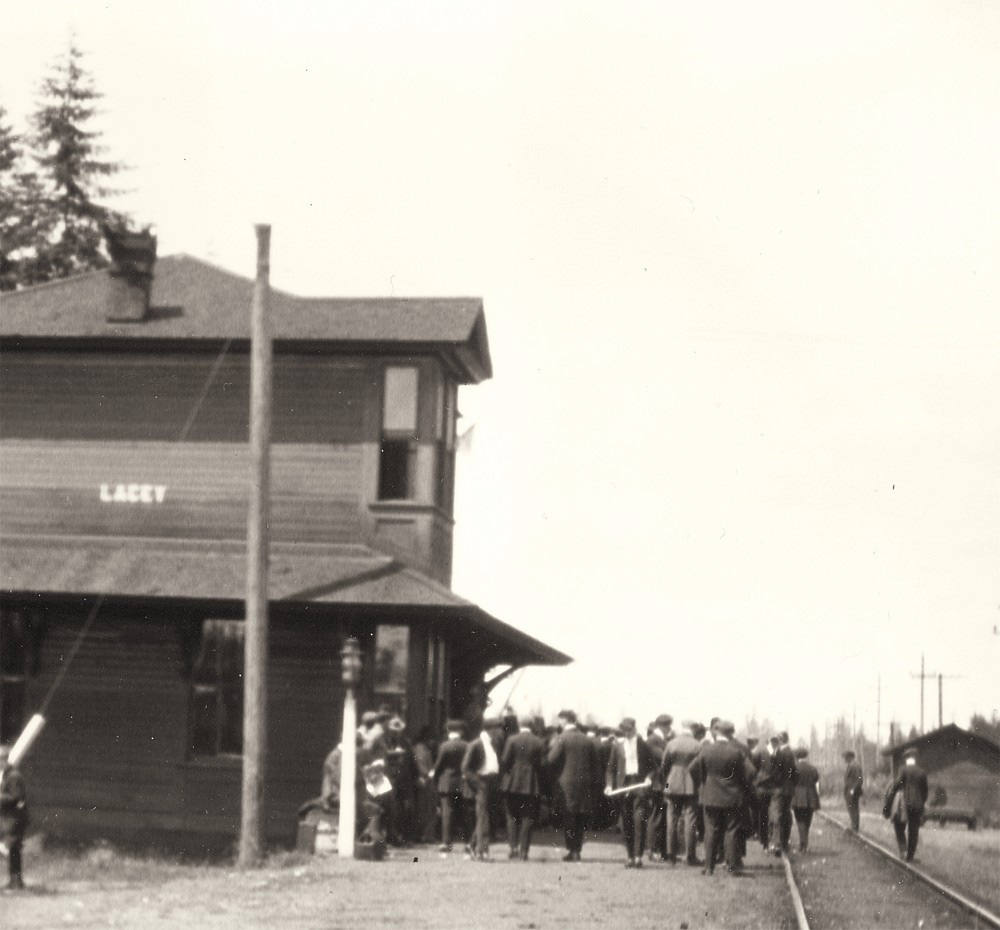The Lacey Depot
The Northern Pacific Railroad reached the rural farmlands of Woodland, later renamed Lacey, Washington in 1889. Within two years, the company constructed a depot on what is now Pacific Avenue to serve the growing community as well as the new horse racing track built nearby by Isaac C. Ellis. The Lacey Depot was on the Northern Pacific’s Grays Harbor Line, which eventually ran from Saint Clair east of Lacey all the way to Moclips on the Pacific coast.

The depot was of a standard third class, two-story design with the ticket office, waiting room, freight room, and express room on the ground level, while the two-bedroom living area set aside for the station agents and their families was on the second floor. A passenger platform and several outbuildings, including a bunkhouse made from a repurposed rail car, were also located on the depot’s grounds.
Inside the depot, passengers were welcomed by the warm glow and distinctive scent of the coal-burning, pot-bellied stove. Darkly-oiled, smoothly-worn wooden seats provided a place to wait for the often-tardy train to arrive.
Behind a lattice-work cage stood the ticket agent, seen by many as a gatekeeper of the glamorous wider world of big cities and far-off places. Many of those who served as ticket agents at the Lacey Depot over the years were young women, such as Elizabeth Gallagher and Rose Franz.
In addition to being a transportation center for people and goods, the Lacey Depot was also an information hub. Mail arrived by train, making the depot a logical place to also serve as the local post office, which it did for a number of years in the early 1900s. During this time, Grace Ratcliffe and afterward Eveline Kenney pulled double duty as both ticket agent and postmaster. The depot was also equipped with a telegraph, allowing for nearly instantaneous communication with far-flung localities.
In the early 1930s, increasing competition from automobile and bus travel and the widespread economic turmoil brought on by the Great Depression dealt major blows to the rail transportation industry. As a result, in many areas train service was curtailed and depots were shuttered. Lacey’s depot was among these casualties, and in 1933 the Northern Pacific sold the depot building to a local man, Lawrence Ulery, for $60. What became of the building itself at this time is an enduring mystery, but Northern Pacific documents suggest that Ulery likely dismantled or removed the building to another location. Although an operating rail depot no longer existed in Lacey, passenger and freight service were still available at the depot site through at least the 1940s.
Like many places across the West, the coming of the railroad to the area which became Lacey was doubtlessly among the most significant developments in this city’s history. And, while the original depot has been gone for the greater part of a century, the community which it did so much to foster continues to grow in leaps and bounds.